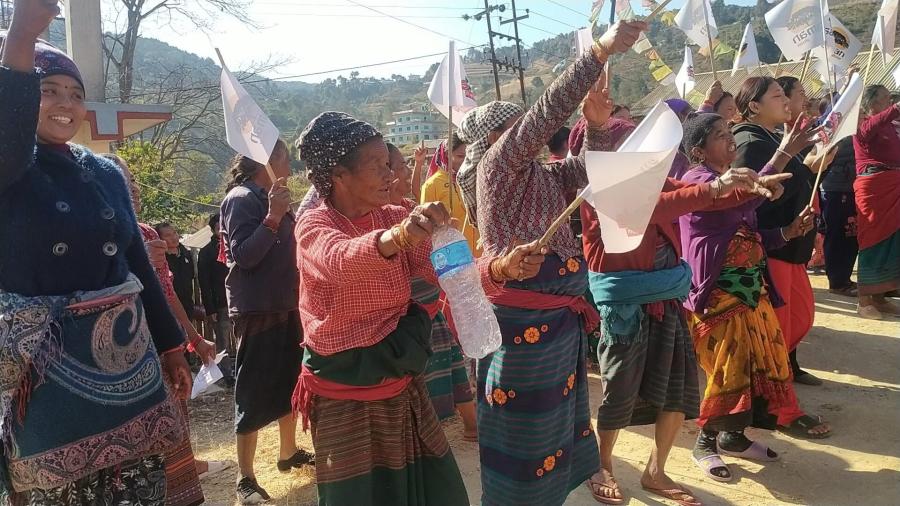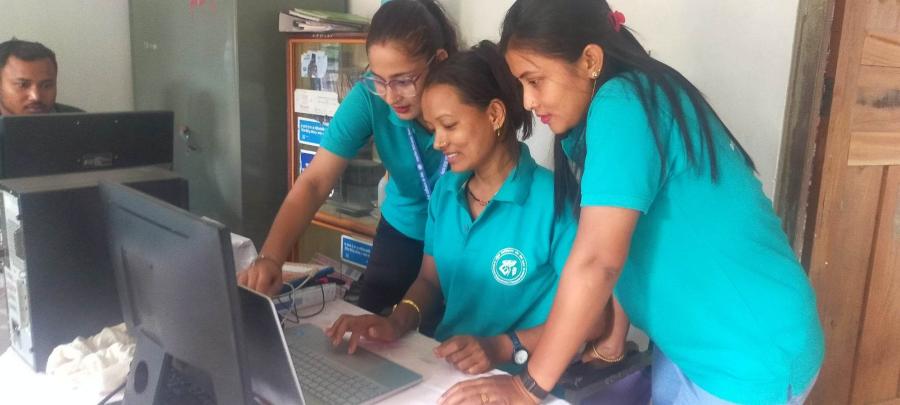In many aspects of their lives, women and people of the lower castes in South Asia can be described as having marginal voices, a viewpoint exemplified by the dearth of ethnographies attending to these particular perspectives. This is especially true in Nepal. Mary M. Cameron attempts to redress this failing with the 1998 publication of On the Edge of the Auspicious: Gender and Caste in Nepal. Bringing the roles of both caste and gender to bear on traditional anthropological issues, Cameron illuminates the subtleties and complexities of hierarchic and cultural relationships in the small farming village of Bhalara in far western Nepal. She questions ideological and religious ideals in order to privilege "on the ground" action and communication in everyday lives, and she argues that explanations of social structures may vary between castes and between men and women, despite a commonly practiced hierarchy.
Based on dissertation research conducted in the late 1980s, the book follows the classic and encompassing model of traditional ethnography. Insightful and ambitious, it draws almost invisibly on previous years as a Peace Corps Volunteer in Nepal. The author asks how gender and caste inform village life in Nepal. Cameron's answers to these questions are, in turn, used to question social issues, giving us a broad view of a particular culture from a specific perspective. The introductory chapter describes the landscape, demographics, ethnographic methodology/theory and, to a certain extent, the author's place within the community she writes about. She describes for us the difficulty of interviewing and working with women of low-caste while living in a dwelling owned by a high-caste family. In this and the following chapter, Cameron provides a useful description of caste, clarifying our understanding of the term while conveying its highly contextualized and slippery usage in local dialogue. Later chapters discuss such broad topical issues as patronage, farming, labor, artisan and domestic work, honor and sexuality, marriage and kinship, childbirth and marriage.
For those who are looking for an ethnography alive with the voices of individuals and evocative descriptions from the field, the first half of the book will be disappointing. A tension exists between Cameron's desire to provide the "perspective" of low-caste women and the authorial expertise of the narrative, which leaves little room for dialogue from the women she writes about. Cameron's broad and somewhat structural agenda allows us to see clearly the ways that women of low-caste are empowered by their work both inside and outside the home, and by ritual and practical roles such as midwife, mother, wife, laborer and artisan. We also see how the structures of wider society and an increasing capitalist market keep them marginalized and in fact may be undermining their existing power. What is sacrificed is our ability to perceive individual personalities and knowledge. Still, there are points where local women's experiences and voices shine through, most especially in later sections that discuss marriage, sexuality, and childbirth.
Cameron's book is perhaps most useful in the context of other South Asian area studies. It provides a muchneeded reminder of how accepted expectations of "woman," "low-caste," "Hindu," and "rural" can change both diachronically and geographically. Cameron points out significant differences between Bhalara and traditional anthropological descriptions of ritual hierarchy and gender relations on the Indian subcontinent. She thus demonstrates how local practices and understandings -- both within geographic communities and between them -- exhibit empirical differences that should be acknowledged and incorporated into existing scholarship. Her discussion of low-caste women's perspectives has the potential to impact the way that the wider field of anthropology discusses different levels of hierarchical relationships in general. By illuminating the ways in which low-caste women perceive themselves as "different" than, rather than necessarily "less-pure" than, other groups, Cameron shows us the problems inherent in researchers' descriptions of Sanskritization or claims of upward mobility. She questions the often-accepted belief that lower classes and castes (those termed marginalized) necessarily aspire to upward mobility and emulation of those financially, ritually and powerfully situated "above" them in the social hierarchy. Cameron shows how social identification can differentiate groups and create positive identity that is not necessarily based on any wish to become like those of higher caste. In addition, she shows how these discourses of difference can provide alternatives that effectively question and cross-cut the social perspective maintained at the center. Her broad social descriptions reveal how labor practices and marriage rituals reflect and reproduce women's practical power in the home and in society. It is not a new idea to say that, as women's participation in outside production increases, their power within the household also rises. However, Cameron analyzes how such practices influence and are influenced by other aspects of life. In describing these power relationships she never loses sight of wider society, which, through global market competition and the erosion of existing patronclient relationships between castes, is also weakening the position of lowcaste women.
Article copyright Cultural Survival, Inc.



